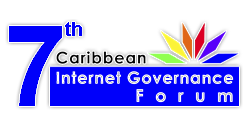General Information

The Republic of Trinidad and Tobago is an archipelagic state in the southern Caribbean, lying northeast of the South American country of Venezuela and south of Grenada in the Lesser Antilles.
Trinidad is the larger and more populous of the main islands; Tobago is much smaller, comprising about 6% of the total area and 4% of the population. The nation lies outside the hurricane belt. (See: http://en.wikipedia.org/wiki/Trinidad_y_Tobago).
For more information about Port of Spain, please visit: http://en.wikipedia.org/wiki/Port_of_Spain
General Information
Capital: Port of Spain
Official languages: Spanish, English
Surface: 5.128 square kilometers
Population: 1.075.066 inhabitants
Currency: Trinidad and Tobago dollar
Climate: tropical climate; warmer months from June to October. The average temperature in July is: minimum 23 Celsius degrees / maximum 31 Celsius degrees.
Interesting places to visit:
- Restaurants and discotheques: Ariapita Avenue
- Entertainment and shopping: Frederick Street, uptown Port of Spain, St. Clair and Woodbrook
- The “Royal botanic gardens”
- Maracas Beach (main beach in Port of Spain)
Piarco International Airport
The main airport is situated in Piarco, 25 km East of Port of Spain.
Transport to the city is operated by the Airport Taxi Driver's co-operative. Bookings for the service should be made with the Dispatcher at the Custom's Exit.
Facilities
The First Citizen's Bank T&T Ltd operates a Bureau de Change at the airport, open from 6am to 10pm daily. There are also ATMs available. Restaurants are open 24 hours a day. There are 12 different duty free shops as well as several convenience and speciality stores, including a music store.
Departure Tax
TT$100 (must be paid in local currency).
http://www.trinidadairport.com/
Departure Tax: TT$ 1 = 0.16 USD
Link to Converter: http://coinmill.com/TTD_calculator.html.
Transport in the City
The public/private mini bus system of transit in Port of Spain is fast, frequent and cheap and it's worth investing the time to know the set routes.
These are also called maxi taxis while route taxis look like private cars except for the H number plate. Taxi drivers should quote you the rate for your destination before you agree to get in their car, they are relatively expensive.










